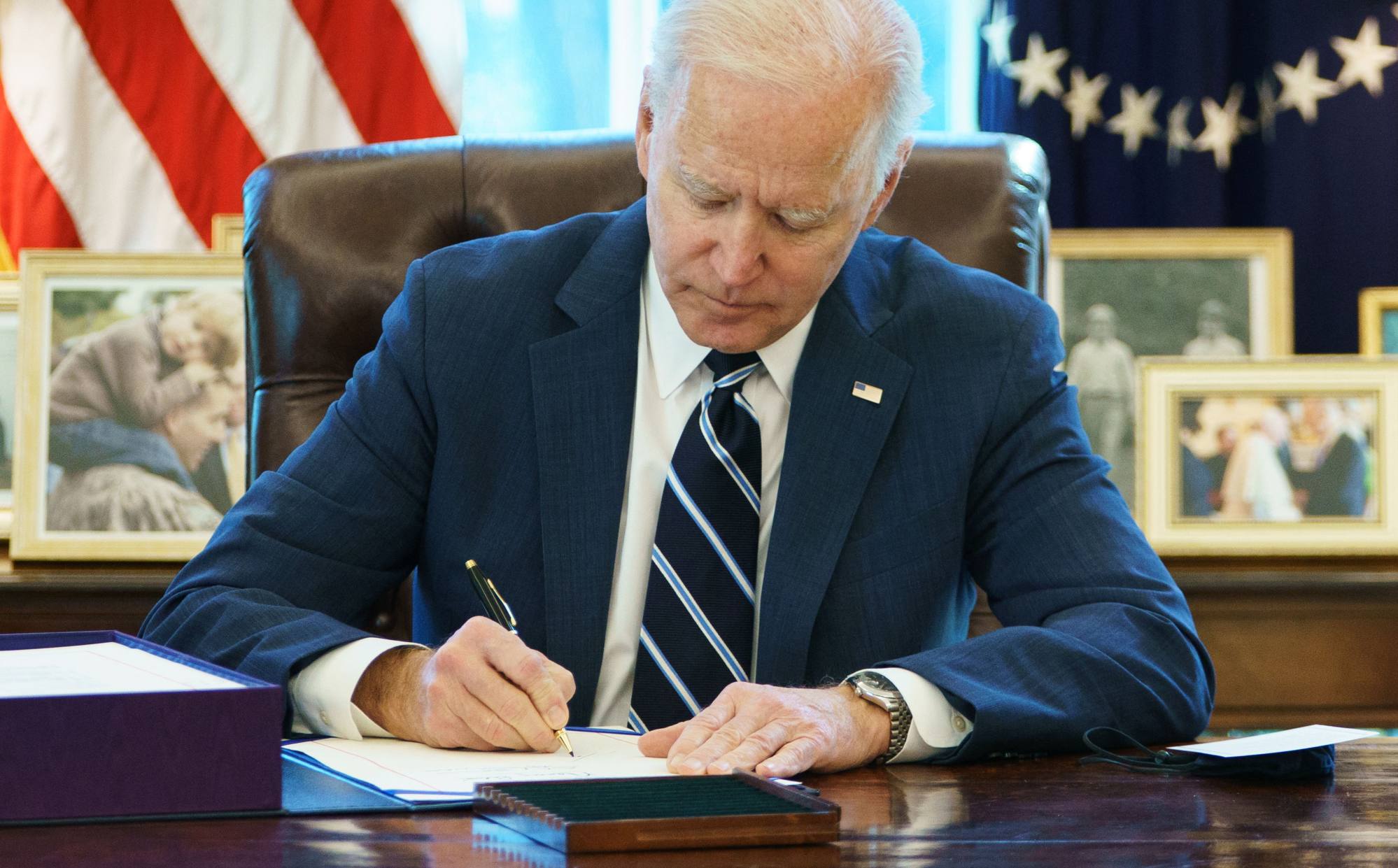
Surge in US government spending pits America against China’s state capitalism. Which is doing better?
- The trillions of dollars the US is throwing at reviving jobs and repairing crumbling infrastructure has to be funded by higher taxes and borrowing from the rest of the world
- In China, the state owns a quarter of the net national wealth and can modernise infrastructure without imposing higher taxes on citizens
The American Jobs Plan can be broken down into four major spending components over the next decade or so: US$621 billion on upgrading and repairing transport infrastructure and transit systems; US$650 billion on improving life at home, quality of drinking water and broadband access; US$400 billion on improving elder care and caregiver salaries; and US$580 billion on research, development and manufacturing, with a focus on clean energy. The underlying strategy is to deliver a green lifestyle and combat climate change.
The US$2.3 trillion plan for infrastructure and jobs in the US is long overdue. Also, the US$1.9 trillion American Rescue Plan may be what the world economy needs to recover from the pandemic. The Organisation for Economic Cooperation and Development estimates that this stimulus package, together with a US$900 billion bill in December, will add 1.5 per cent to global growth this year.
However, can the US invest so much without inflation? Can the rest of the world fund this without higher interest rates? As economists Charles Goodhart and Manoj Pradhan point out, global disinflation in recent decades came as China became the source of cheap goods and services.
They think this trend will not last. Similarly, the headline of an article by economist James K. Galbraith warns: “China Is Missing from the Great Inflation Debate”. He, however, thinks that China will not rock the boat by pushing up prices.

At the end of 2020, US net foreign liability stood at US$14.1 trillion, under three-quarters of which is funded by East Asia (Japan, China, Hong Kong, Taiwan and Singapore), and the rest of which is mostly funded by Europe (Germany, Netherlands, Norway and Switzerland).
As economist Kenneth Rogoff puts it, “it seems to be an article of faith among US policymakers and many economists that the world’s appetite for dollar debt is virtually insatiable”.
The latest data from the Chinese Academy of Social Sciences shows that by 2018, China’s net national wealth had reached 80 per cent of the US level, and China’s gross domestic product was 65 per cent of the US level. China is a net lender to the world, and running the world’s largest current account surplus; the US is a net borrower, and running the world’s largest current account deficit.
China’s GDP ‘paradox’: why young Chinese despair about future prospects despite rapid growth
Meanwhile, US government spending rose from 35.7 per cent of GDP in 2019 to 47.2 per cent in 2020; Chinese state spending increased more modestly, from 34.1 per cent of GDP in 2019 to 37 per cent in 2020.
Although less efficient than the private sector, the state sector has contributed to China’s growing net national wealth.
And as the state owns a quarter of this wealth, it has more than enough reserves to modernise infrastructure without imposing higher taxes on citizens. A review of 40 years of Chinese state-owned enterprises’ performance has found that they operate more like social enterprises, and are not wholly for-profit.
In contrast, a combination of shareholder capitalism and frequent elections in the US means it is prone to short-termism. The bulk of the net national wealth is in private hands, while public infrastructure is crumbling. Money politics means everything depends on monetary creation, which in turn relies on growing foreign debt.
In short, one kind of state capitalism relies on domestic savings and the other, on foreign savings.
As Jude Blanchette at the Centre for Strategic and International Studies argues: “Absent a deep and enduring commitment to rebuilding internal competitiveness, as well as creating an economic system that is vastly more inclusive, the United States can only tread water while China continues to march toward the future.”
As governments assume larger roles around the world, the issue is how they are to deliver performance across a range of dimensions – military, economic, social, technological and organisational – without corruption and widening social injustice. So far in the US, the free market has allowed the top 1 per cent to increase concentration of wealth and power.
The country that will win this competition is not the one who indulges in wishful thinking that the other side will falter or collapse. It’s the one who makes the fewest strategic mistakes.
Andrew Sheng worked at the World Bank in the 1990s on development finance. The views expressed here are his own


